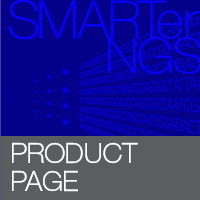B cells are essential parts of the adaptive immune response, expressing B-cell receptors (BCRs) on their surface, thus enabling the recognition of unique molecular patterns in pathogens. Understanding the profiles of BCRs (i.e., the diversity of receptors and clonotypes) can not only aid in gaining insights into the adaptive immune response in healthy individuals but also in those with a wide range of diseases. Accurate determination of the clonotypes and isotypes expressed by the immune system will aid in a complete picture of the B-cell repertoire.
Current next generation sequencing (NGS) approaches for profiling B-cell repertoires yield valuable insights into the adaptive immune response and antibody engineering. There are two major approaches used in profiling B-cell repertoires: multiplex PCR and 5' RACE combined with NGS. While multiplexing allows you to amplify multiple BCR genes in one reaction, it may prove challenging with regard to sensitivity, specificity, and biases in amplification of certain sequences, all of which can lead to difficulties in accurate and reproducible identification of isotypes.
The new SMARTer Human BCR IgG IgM H/K/L Profiling Kit leverages SMART technology (Switching Mechanism at 5' End of RNA Template) and pairs NGS with a 5' RACE approach in order to provide a sensitive, accurate, and optimized approach to BCR profiling (Figure 1A). Contrary to systems that use multiplex PCR, the 5'-RACE method does not require any prior knowledge of the sequences comprising the 5' end of BCR transcripts. The 5'-RACE method reduces variability and allows for priming from the constant region of IgG and IgM heavy or light chains (Figure 1B). The benefits of 5' RACE with gene-specific amplification come together in this highly sensitive and reproducible method for profiling B-cell repertoires, and allow you to capture complete V(D)J variable regions of BCR transcripts. Downstream sequencing allows for accurate identification of top clonotypes and reliable assignment of isotype in a majority of cases.
This profiling kit also includes unique molecular identifiers (UMI). The BCR UMI Oligo contains 12 random nucleotides, which are incorporated into the cDNA during the template-switching step. When used with Cogent NGS Immune Profiler Software, PCR duplicates and errors can be detected and removed for more accurate and reliable clonotype calling and quantification.

Figure 1. SMARTer Human BCR IgG IgM H/K/L Profiling Kit workflow. Panel A. First-strand cDNA synthesis is dT-primed and performed by the MMLV-derived SMARTScribe Reverse Transcriptase (RT), which adds nontemplated nucleotides upon reaching the 5' end of each mRNA template. The SMART UMI Oligo anneals to these nontemplated nucleotides and serves as a template for the incorporation of an additional sequence of nucleotides into the first-strand cDNA by the RT (this is the template-switching step). The first strand cDNA is then subjected to two rounds of gene-specific PCR amplification (see details in panel B). The nested PCR in the second round ensures that the vast majority of the reads map to B-cell receptor transcripts. Panel B. The first PCR uses the first-strand cDNA as a template and includes a forward primer with complementarity to the Illumina Read Primer 2 sequence (PCR1 Universal Forward primer), and a reverse primer that is complementary to the constant region of BCR heavy or light chains (PCR1 IgG/IgM/IgK/IgL Reverse primers). By priming from the Read Primer 2 sequence and the constant region, the first PCR specifically amplifies the entire variable region and a considerable portion of the constant region of BCR heavy or light chain cDNA. The second PCR takes the product from the first PCR as a template and uses semi-nested primers (PCR2 IgG/IgM/IgK/IgL Reverse primers) to amplify the entire variable region and a portion of the constant region of BCR heavy or light chain cDNA.









